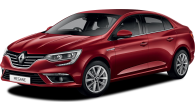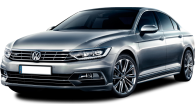The S-Class also became Mercedes's technological showpiece. The W116 model of 1972 was among the first cars designed for crash safety and the W126 model of 1979 introduced ABS brakes and airbags to mass production cars (although airbags had appeared briefly in the US on 1973-76 Oldsmobiles).
The 1991 W140 model — derided as the "swine-class" for its huge size — established a reputation for unimpeachable build quality that some think the W220 of 1999 lost slightly, although it shook off the piggy nickname with renewed agility and graceful styling.
Now comes the W221, the first S-Class of the new millennium and the car that must uphold Mercedes-Benz's reputation for the remainder of the decade, at least. Its advanced technology credentials are an optional night vision system and hybrid powered concept versions, seen at last year's Frankfurt motor show. Until those cars hit the roads the question is how the S-Class performs in a world crowded with luxury car contenders and pretenders. After a week in an S500 L we have an answer. The fact that our week-long test included 650km of driving in a single afternoon gives some clue as to what it is.
Styling on the largest Mercedes has moved with the times. The conservative and devout Adenauer might find this one a bit racy with its 17-inch wheels (18-inch on the test car) and prominent, flared guards. The boot and tail lights seem a nod to Maybach, which probably seemed like a good idea several years ago when the car was being drawn, although these days the less said about Mercedes-Benz's underperforming super-luxe line the better. But the result is lithe without being undignified. Something about the contradiction between its ready-for-action stance and its traditional luxury chromework evokes an athlete in a tailored suit.
The interior is a new direction for Mercedes. A central control knob, similar to BMW's reviled iDrive and Audi's better regarded MMC system, appears on the centre console. Like the Audi system (and — to be fair — the latest versions of iDrive) the Benz comes with a "back" button to extricate you from the murkier depths of its multi-layer menu. It becomes comprehensible after a few days although operations like changing the radio station can be needlessly complex if you're using another mode, such as navigation, at the time. But that was also a whine about the old model's Comand system. Whether these controls are truly intuitive or whether your intuition adapts to their little ways is the unanswerable question.
But questions of interior quality have been answered emphatically. Some reviewers said the previous model displayed a little too much plastic in the cabin. Not this one. Whatever plastics it uses are convincingly disguised, such as the steely cold feeling seat adjustment buttons. The rest is leather, cloth and metal.
The result feels both old-world and up-to-the-minute. It's an elegant contradiction exemplified by the speedometer. Look again at the needle and dial and you realise it's actually an LCD screen emulating a conventional instrument. On cars equipped with night vision this is where the display appears.
We'll withhold our verdict on the usefulness of this $3590 option until we take an S-Class down a 'roo-ridden country road at dusk. In city driving it adds little to what the streetlights illuminate. But the xenon headlights, which follow the steering, are brilliant.
Radar cruise control is optional and will soon include a second, long-range radar that scans for objects entering the car's path. The system gives Mercedes the confidence to offer full automatic braking, from up to 200km/h down to a standstill if it detects an object. Certification in Australia has been delayed; the small matter of it using the same frequency as radio telescopes has to be resolved. Astronomers might confuse a passing S-Class with a distant galaxy.
Another welcome change is the end of the Mercedes-Benz patent shin-scraper — also known as a foot-operated park brake. It's replaced by an electro-mechanical push-button parking brake as already used by Audi, Jaguar and BMW. By contrast the main brakes remain a conventional hydraulic/vacuum design with a direct physical link between the driver's foot and the wheels. Mercedes decided not to use the Sensotronic brake system of other recent models.
In Sensotronic, the brake pedal acted as a switch for an electronic system. Impressive as this was to technology wonks, it offered no overwhelming advantage — particularly as ABS and stability control work perfectly well with conventional brakes. Old-fashioned or not, the S500's brakes had an exemplary combination of initial bite, strong stopping power and finesse for gentle stops.
The interior ambience can best be summed up in one anecdote. You can listen to classical music at low volume when the S-Class is sitting on the motorway speed limit. (What else would a road tester for a broadsheet newspaper listen to?) Most cars drown out quiet orchestral passages, but the S-Class is a mobile concert hall.
Ahead of its double-insulated firewall a newly designed 5.5-litre V8 turns at a relaxed 1500rpm at 100km/h, returning an impressive 12.4 litres per 100km over a very demanding test. Despite the truck-like low revs there's no vibration or coarseness through the driveline. That's expected but the way it responds between corners on winding roads is a surprise. Its 0-100km/h time of 5.4 seconds makes the two-tonne S-Class as fast as a Porsche Cayman. The seven-speed transmission can be shifted with steering wheel buttons, right for up and left for down. In sport mode, via a switch on the centre console, it can feel a little fidgety but in comfort mode it is as smooth as the rest of the car.
The steering, light at first in familiar Mercedes fashion, becomes firmer as speeds rise although it never approaches sportscar levels of communication. The same goes for the S-Class's handling, although it is fundamentally well-balanced, well-endowed with grip and astonishingly agile for a big car.
And big it is, although the styling disguises its true bulk. Front seat room is ample and the rear compartment of an S500 L is one of the few in any foreign car that is as commodious as those of a Holden Statesman or Ford Fairlane. It comes with three seatbelts but is really set up as a luxurious and roomy space for two, with a second interior control knob in the pull-down armrest for climate and audio.
And while both a Statesman and Fairlane are well-sorted cars they can't approach the splendid isolation of the S-Class. Most of the time its ride is sublime, delivering the wafting sensation that is the mark of true luxury. Occasionally there's a rude interruption from broken bitumen or severely ridged concrete but it is like distant thunder, and larger bumps are almost completely damped away.
That was why, as the big Benz bathed in the autumnal afternoon light beside a quiet road in southern NSW, it seemed entirely reasonable to take the long way home.
Mercedes-Benz S500 2006: L
| Engine Type | V8, 5.5L |
|---|---|
| Fuel Type | Premium Unleaded Petrol |
| Fuel Efficiency | 11.9L/100km (combined) |
| Seating | 5 |
| Price From | $37,840 - $44,550 |
Range and Specs
| Vehicle | Specs | Price* |
|---|---|---|
| s500 Base | 5.5L, Premium Unleaded Petrol, 7 SPEED AUTOMATIC G-TRONIC | $35,200 - $41,910 |
| s500 L | 5.5L, Premium Unleaded Petrol, 7 SPEED AUTOMATIC G-TRONIC | $37,840 - $44,550 |

























